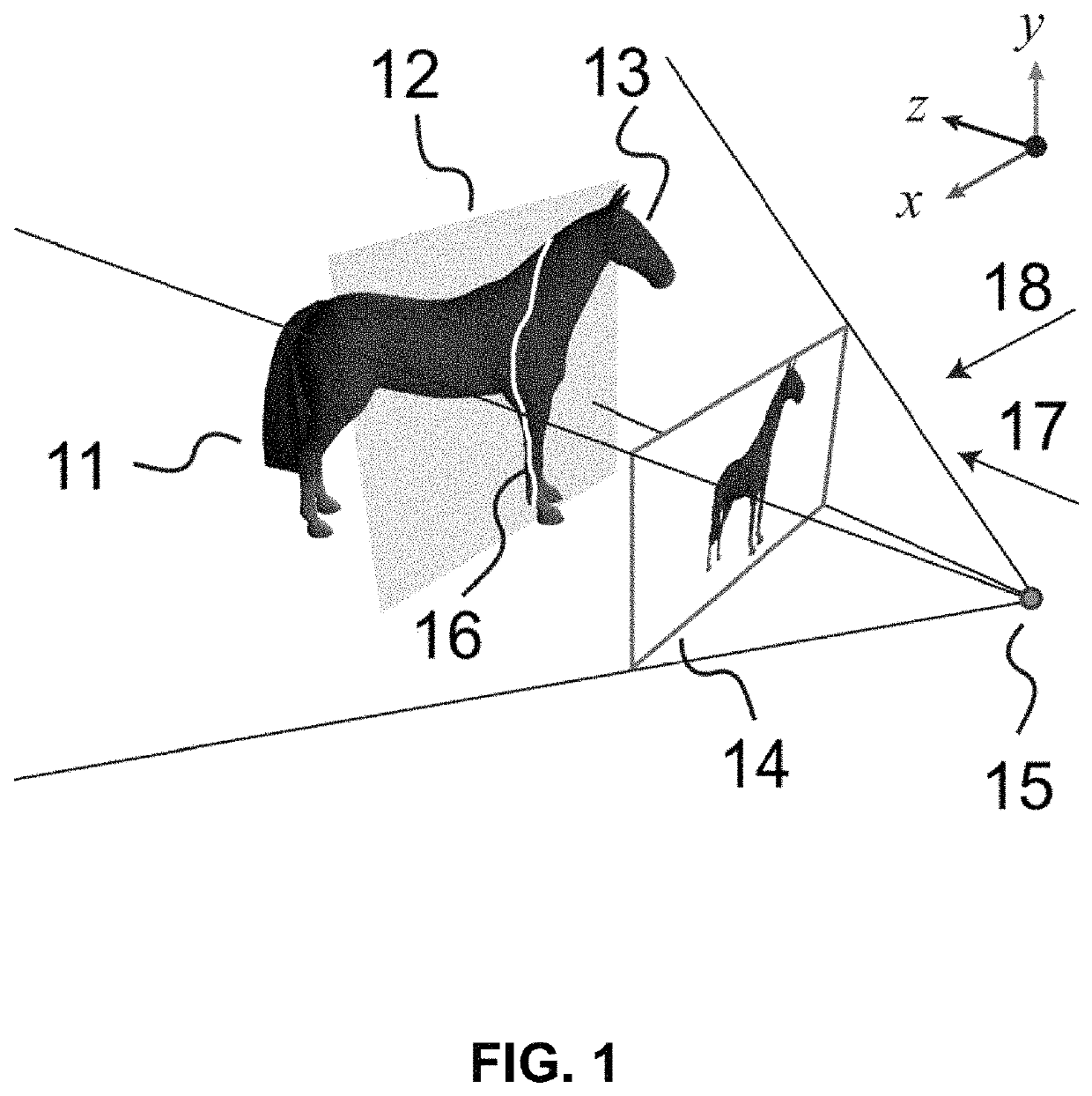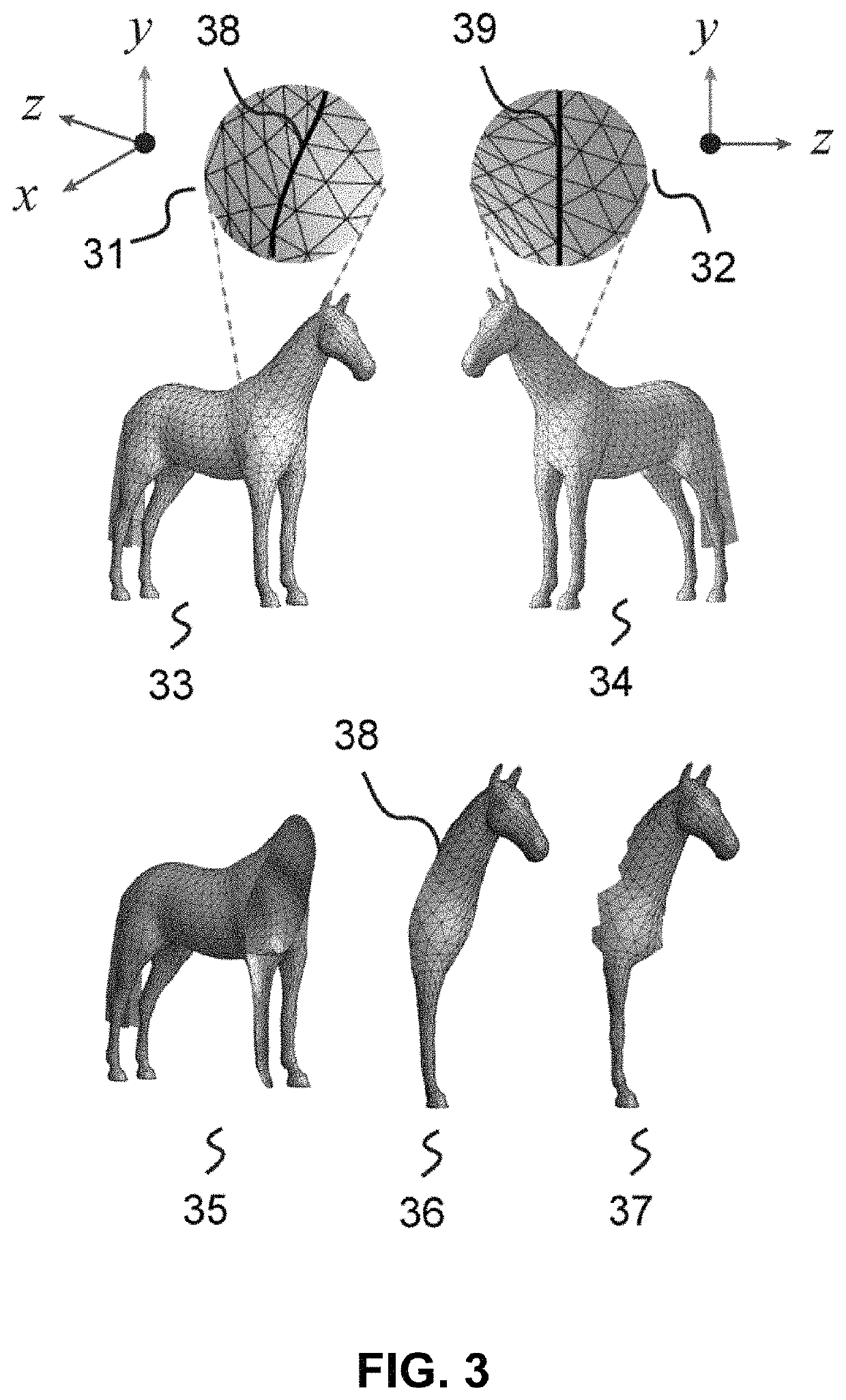2D-3D sculpture paintings
a sculpture and 3d technology, applied in the field of high relief and basrelief synthesis, can solve the problems of difficult to distinguish between the 2d and the 3d parts, cannot generate plausible reliefs for higher depth range variations, and the difficulty of creating a composition that provides plausible percepts for many different viewing angles
- Summary
- Abstract
- Description
- Claims
- Application Information
AI Technical Summary
Benefits of technology
Problems solved by technology
Method used
Image
Examples
Embodiment Construction
[0037]We propose a synthesis method where parts of a given 3D scene are rendered on a substantially planar surface (“rendering plane”) and user selected parts emerge as 3D shapes from the rendering surface. The final geometry is a fully connected mesh where 2D parts and 3D parts are within the same continuum. In order to provide an improved means of user interaction, we define two separate planes: a rendering plane that is the base plane (or background plane) for representing the final composition and a cut plane which provides user control over the selection of the region of interest (“ROI”) of an object within the scene. This region of interest is to be reproduced in 3D. The proposed method and system aim at creating a seamless continuity between the 2D and the 3D parts of an object surface, allowing the user to perceive from a variety of viewing positions plausible compositions comprising 3D elements emerging from the rendering plane.
[0038]The initial challenge consists of matchi...
PUM
 Login to View More
Login to View More Abstract
Description
Claims
Application Information
 Login to View More
Login to View More - R&D
- Intellectual Property
- Life Sciences
- Materials
- Tech Scout
- Unparalleled Data Quality
- Higher Quality Content
- 60% Fewer Hallucinations
Browse by: Latest US Patents, China's latest patents, Technical Efficacy Thesaurus, Application Domain, Technology Topic, Popular Technical Reports.
© 2025 PatSnap. All rights reserved.Legal|Privacy policy|Modern Slavery Act Transparency Statement|Sitemap|About US| Contact US: help@patsnap.com



